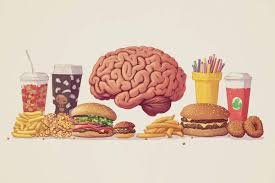The Hunger Habit: Why We Eat When We're Not Hungry and How to Stop
In The Hunger Habit, Dr. Judson Brewer, a psychiatrist and neuroscientist, delves into the psychology of overeating and offers a practical, science-based roadmap to overcome mindless eating. The book examines why we eat when we’re not hungry and how we can break the cycle of overeating by rewiring our habits.
The Habit Loop
Overeating is often a habit formed through a loop of:
Trigger: Stress, boredom, or emotional discomfort.
Behavior: Eating as a coping mechanism.
Reward: Temporary relief from discomfort or pleasure from food.
Over time, this loop becomes automatic, making it challenging to resist food cravings even when we’re not hungry. Understanding this cycle can help us interrupt it and regain control over our eating habits.
The Role of Mindfulness
Mindfulness is at the heart of the approach. Instead of using willpower to resist food, we must cultivate awareness around eating habits. This means:
Paying attention to cravings and the sensations they create.
Observing the emotional triggers behind eating.
Becoming curious about the effects of eating on your body and emotions.
For example, notice how you feel after indulging in a craving. Do you feel satisfied or regretful? This curiosity helps reduce the reward of overeating and weakens the habit loop over time.
Why Willpower Doesn't Work
Science now challenges the idea that willpower is the key to overcoming bad eating habits. Willpower is a finite resource, and relying on it often leads to failure. Instead, mindfulness works as a more sustainable tool by transforming cravings into opportunities for insight and growth.
Practical Steps to Stop Overeating
Step 1: Recognize the Trigger
The first step in breaking the hunger habit is identifying what triggers your eating. Common triggers include:
Stress from work or personal life.
Social pressure, such as eating at gatherings.
Boredom or a desire for comfort.
Step 2: Embrace Curiosity
Once a craving emerges, take a moment to observe it with curiosity. Ask yourself:
Where do I feel this craving in my body? Is your belly actually growling?
What emotion is driving this urge?
What will happen if I wait before acting on this craving? If you wait 10 minutes, most cravings disappear!
This nonjudgmental curiosity creates space between the trigger and your response, allowing you to make a conscious choice rather than defaulting to automatic eating.
Step 3: Find Alternative Rewards
Replace the reward of eating with healthier alternatives. For example:
Take a walk or do 10 pushups and some stretching.
Journal about your emotions.
Practice deep breathing or meditation to calm your mind.
These activities provide the same stress relief or emotional comfort as eating but without the negative consequences.
The Bigger Picture: Cravings Beyond Food
These insights extend beyond food cravings to other habits like smoking or excessive screen time. The same principles of mindfulness and curiosity can help tackle a wide range of behaviors driven by habit loops.
Final Thoughts: Freedom Through Awareness
Overeating not as a failure of discipline but an opportunity to understand your mind better. By being CURIOUS, and becoming mindful of the triggers and rewards that drive eating habits, we can break free from the cycle of mindless eating and achieve a healthier relationship with food.
This is a mindset that my clients and I work on for long term, sustainable healthy relationships with food. Give me a call if you would like to feel this freedom!







